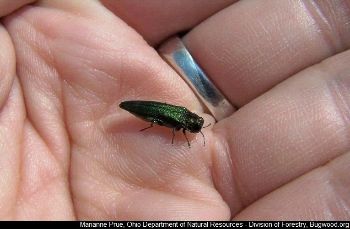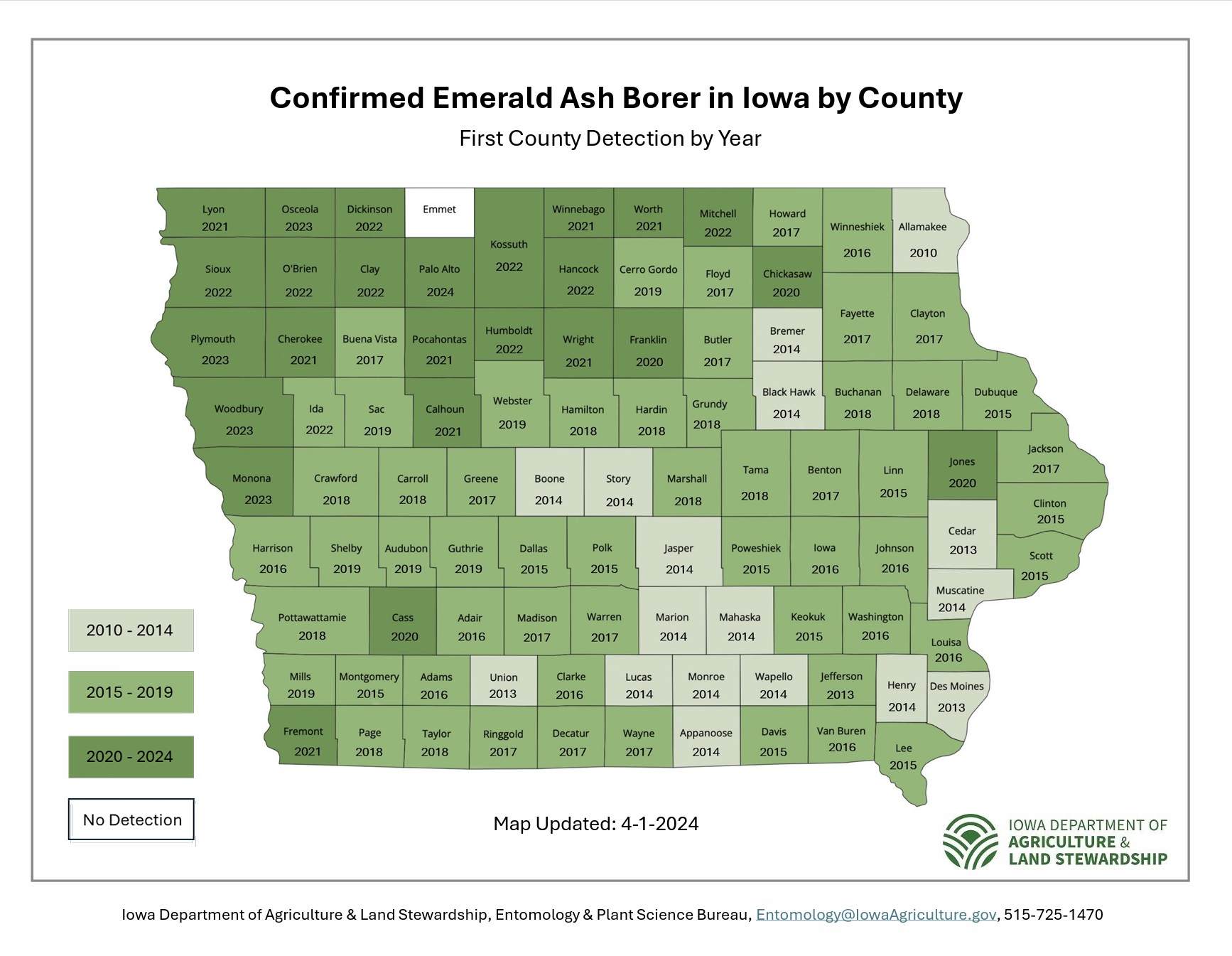Emerald Ash Borer
The emerald ash borer (EAB) is a destructive wood-boring beetle that attacks and kills ash trees (Fraxinus spp.). Adult EAB lay eggs on the bark of ash trees, and then larvae burrow into the bark. The larvae tunnel below the inner layer of bark, disrupting the flow of water and nutrients within the tree. The cumulative damage typically kills a tree within four years. Native to Asia, EAB was first discovered in the U.S. near Detroit, Michigan in 2002 and has since spread to over 35 states. This tiny insect is responsible for widespread ash tree mortality in Iowa and many other states.


.jpg)